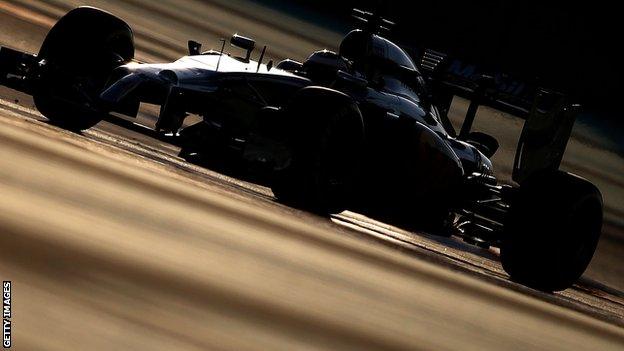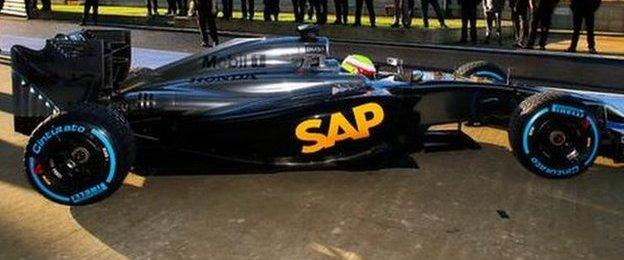Honda wins Formula 1 engine battle with FIA
- Published

Honda won multiple championships with Williams and McLaren during the '80s and '90s
McLaren's new engine partner Honda has won its fight to be allowed to develop its engine during 2015.
Formula 1's governing body the FIA has backtracked on an earlier ruling that allowed Mercedes, Renault and Ferrari to upgrade their engines but not Honda.
The move comes after Honda expressed its unhappiness about what it considered to be an unfair situation.
Honda will now be allowed to develop its brand new engine within limits explicitly laid out by the FIA.
What can Honda do?
Mercedes, Renault and Ferrari are allowed to change up to 48% of the engines they used in 2014 by the end of the 2015 season.
This is defined by a number of 'tokens', which are assigned to parts of the engine on the basis of their influence on performance.
Out of a total of 66 tokens, Mercedes, Renault and Ferrari can modify 32 through 2015.
Previously Honda had been barred from changing any of its engine after it was approved for competition on 28 February.
Friday's ruling will allow Honda to change a given amount of its engine calculated by the average of the number of tokens unused by the other manufacturers by the time of the first race in Australia on 16 March.
In the example given by FIA race director Charlie Whiting, and seen by BBC Sport, he writes: "If the three 2014 manufacturers have eight, seven and five unused tokens respectively at the start of the season, then the new manufacturer will be allowed to use six during the season (the average rounded down to the nearest whole number)".

Honda is returning to F1 with McLaren after an absence of six years
Why has this been done?
Honda, which is the first new engine manufacturer to enter F1 for well over a decade, had been concerned that it was not being treated fairly.
Its senior management flew over from Japan to meet the FIA on Monday to express its concerns at the situation.
This followed the decision by the FIA to allow Mercedes, Renault and Ferrari to use their 32 development tokens over the course of the 2015 season, rather than by the originally intended approval date of 28 February.
That came after Ferrari, who had the worst engine in 2014, pointed out to the FIA that the rules did not clearly define when the modified engines for 2015 should be submitted for approval.
Whiting admitted in his note to the teams on Friday evening that that ruling left "unaddressed uncertainty" within the rules on the permitted engine development.
What appeared unfair to Honda: |
|---|
Its rivals could develop their engines in 2015 following the FIA's initial U-turn but it could not |
It was being forced to supply only four engines to its drivers in 2015, the same as the other manufacturers, even though its rivals were allowed to supply five in their first season with their new engines in 2014 |
In 2016, it was being allowed to use only 25 units of development, the same restrictions on it as the other manufacturers, meaning it missed out on the 32 its rivals could use in 2015. |
The FIA's decision also takes into account the opinions of Honda's rivals that it had an advantage inherent in entering a year late in that it knew a target to aim for, because it was aware of the performance of the rival engines in 2014.
By contrast, Mercedes, Renault and Ferrari were shooting in the dark before 2014, when the new turbo hybrid engine formula, with accompanying fuel restriction, was introduced.
What number of tokens will Honda have available?
None of the three existing manufacturers are expected to start the season with an engine that uses all 32 development tokens.
Mercedes are in the best position, but both Renault and to an even greater extent Ferrari will leave substantial leeway to make major changes to their engine architecture during the season as they are both behind where they wanted to be in terms of development.
It is unclear exactly how much Honda will be able to develop its engine, but the latest FIA ruling and the positions of its rivals mean it is likely to have a significant amount of development available.
- Published8 January 2015
- Published16 January 2015

- Published16 January 2015

- Published2 November 2018

- Published26 February 2019
